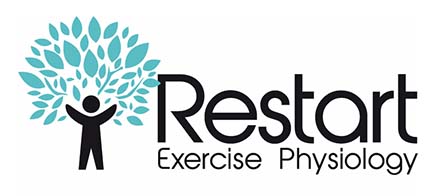Have you ever had joint pain and received an MRI or X-Ray report that has stopped you in your tracks? Has the news surrounding an injury elevated your concern, rather than appease your desire for more information?
Restart’s alliance with Dr. Thomas Choong of Equilibrium Medicine, a local clinic for musculoskeletal pain, has led to many interesting recent conversations about our role as practitioners within our patient’s rehabilitation journey.
Dr. Thomas Choong, graduate of the UNSW Medical School with a diverse medical career including 20 years in musculoskeletal medicine, reflects our sentiments at Restart perfectly: “We are facilitators, not healers”. Dr. Choong continues by stating “I firmly believe patient education and participation are integral to the success of any pain treatment (2).”
The old adage ‘you can lead a horse to water, but you can’t make it drink’ all too often applies when working with patients. It is a skilled practitioner, whichever field in question, that can educate, motivate and empower a patient to make lifestyle changes that will improve their health, wellbeing and quality of life. We can only provide the tools for change, and cannot perform the interventions for the patient. Therefore, the importance of the language we use during our consults must be highlighted, as this can establish one of two pathways:
• A passive mindset, and a potential cascade of movement and activity avoidance behaviours (1), leading to further deterioration in condition state,
• A more proactive ‘can do’ mindset, one of greater self-contribution, less apprehension, and lessening of expectations of the practitioner to ‘fix’ the injury in question.
Treat the patient, not the diagnosis
Question marks around the current approach to diagnosing musculoskeletal (muscle, bone or joint) pain exist. Lewis and Sullivan state that structural changes observed on imaging that are highly prevalent in pain free populations, such as rotator cuff tears, intervertebral disc degeneration, labral tears and cartilage changes, are given to individuals as a diagnosis for their condition (1). This trend can create a belief that their body is damaged, fragile and in need of protection, often resulting in an expectation that any subsequent interventions must provide a cure, typically in quick time with the least required amount of self-contribution.
As Exercise Physiologists, the key to success lies in creating an understanding that, as with other chronic health conditions, there is no magic cure for many persistent and disabling musculoskeletal pain conditions (1). Practitioner support, informed self-management, and the identification and addressing of the relevant biopsychosocial factors, including nutrition, recovery (sleep quality), exercise frequency, amount, and quality, and emotional state (incl. stress management skills), is key to creating a virtuous cycle and the encouragement of more optimal patient results.
References
1. Lewis J, O’Sullivan P. (2018) Is it time to reframe how we care for people with non-traumatic musculoskeletal pain? Br J Sports Med Epub, doi:10.1136/bjsports-2018-099198
2. http://www.equilibriummedicine.com.au/dr-thomas-choong-brisbane
Accessed 26th February 2019

0 Comments